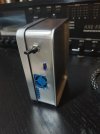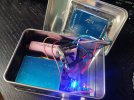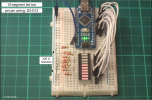Piing
Axe-Master
This is the prototype of a PM2.5 monitor built with Arduino. I have used a Dremel with a Cut-Off Wheel and then a small file.
Any tip to make it look better?



I've found these cheap tin boxes with a transparent window and I intend to build more of these PM2.5 meters as gifts. I never knew what to bring when invited to a birthday, but now I got the idea of this DIY gift
Any tip to make it look better?



I've found these cheap tin boxes with a transparent window and I intend to build more of these PM2.5 meters as gifts. I never knew what to bring when invited to a birthday, but now I got the idea of this DIY gift










